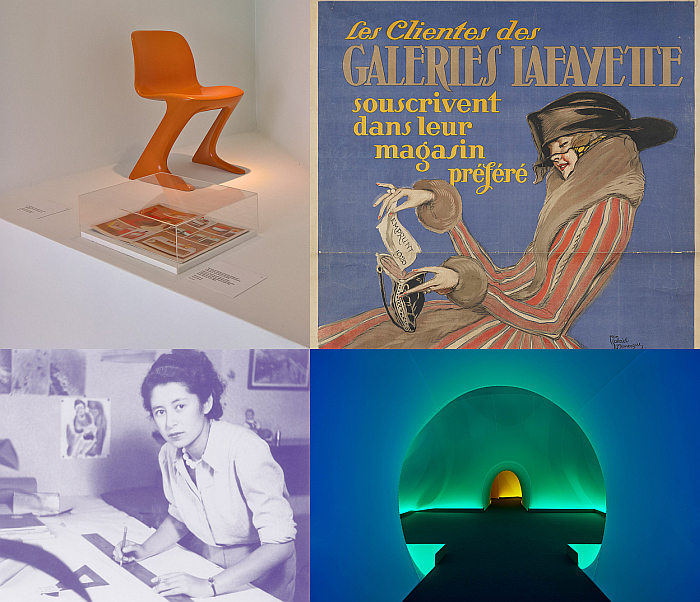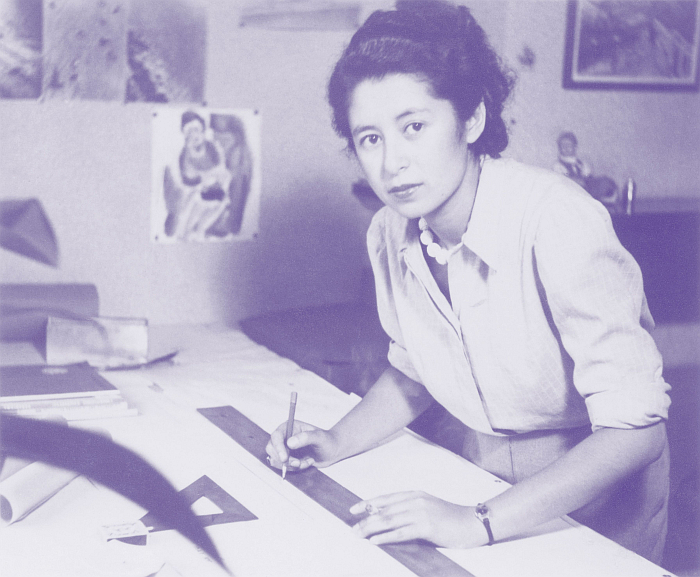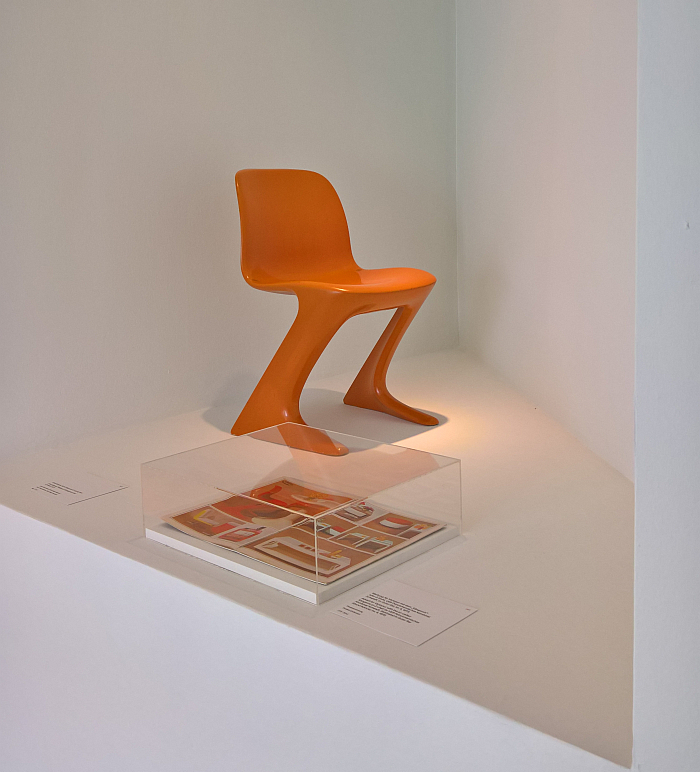5 New Architecture & Design Exhibitions for April 2024
As Letitia Elizabeth Landon so very, very, nearly wrote in 1823,
Of all the months that fill the year
Give April’s month to me,
For the architecture and design museums are then so filled,
With sweet variety!
Our sweet variety in April’s month of 2024 can be found in Dessau, Brussels, Rome, Paris and Dresden…….
“The Gesture Speaks” at the Bauhaus Museum, Dessau, Germany
For all that the Bauhauses were, without question, art and design and craft and architecture, they were also movement; if movement that tends to be overshadowed by the architecture and craft and design and art and romanticising and commercialisation.
Movement at the Bauhauses that existed very much in context of the wider Körperkulturbewegung, Body Culture movement, of the early 20th century that was such a key aspect of the Reform movement of the period with its mix of esotericism, mysticism, naturism, nature, rejection of industrialisation and for all a searching, a longing, for a new form of human society and new forms of human relationships.
And movement at the Bauhauses that the Bauhaus Museum, Dessau, will seek to place more in the spotlight of, more centre stage of, more actively in, the (hi)stories of the institutions.
To that end The Gesture Speaks promises a presentation of, primarily, photographs and videos that will discuss and explore movement at the Bauhauses as represented by the Theatre Workshop with its famed, if rarely experienced, and even more rarely understood, ballets, by the Harmonisierungslehre, Theory of Harmonisation, of Gertrud Grunow that was such an important part of the Vorkurs in the Mazdaznan era Bauhaus Weimar and which divided Bauhäusler almost as much as Mazdaznan, and by, and primarily by, the avant-garde gymnastics and dance so defining of the period, and as practised and advanced by the likes of, and amongst others, Hade Kallmeyer, Mary Wigman or Émile Jaques-Dalcroze, the latter whose methodology, as previously noted, Le Corbusier’s elder brother Albert taught and practised for a great many years in Paris. His younger brother, i.e Le Corbusier, apparently, also occasionally practising with him. Which is still a weird thought.
Not that we expect Le Corbusier to pop up in Dessau, a little joke there for all fans of International Functionalist Modernism; but we do expect a presentation that through letting the gestures speak their own story should allow not only for more probable appreciations of life and study at the Bauhauses, but also allow for more nuanced understandings of not only the society in which the Bauhauses existed but how the Bauhauses related to, were informed by, and informed, that society.
The Gesture Speaks is scheduled to open at the Bauhaus Museum, Mies-van-der-Rohe-Platz 1, 06844 Dessau-Roßlau on Friday April 12th and run until Sunday February 2nd. Further details can be found at www.bauhaus-dessau.de
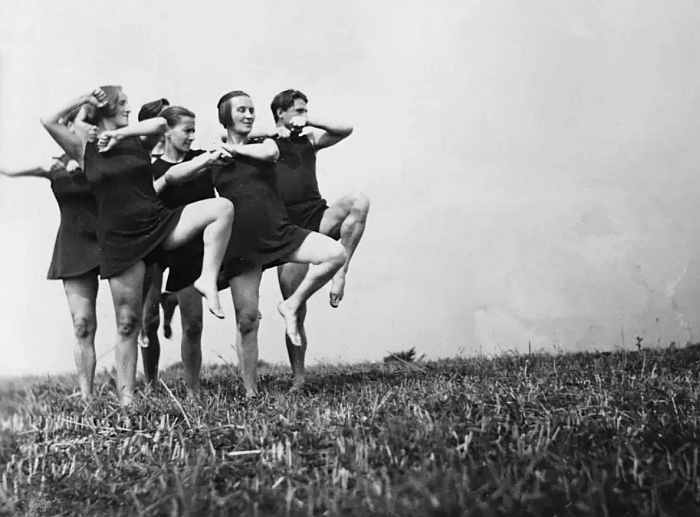
Gymnastics as part of the Körperkulturbewegung of the early 20th century, a focus of The Gesture Speaks, Bauhaus Museum Dessau (Photo © and courtesy Stiftung Bauhaus Dessau)
“Simone Guillissen-Hoa” at CIVA, Brussels, Belgium
Born in Beijing on March 7th 1916 Simone Hoa travelled to France aged 12 and subsequently on to Belgium where she studied architecture at La Cambre, Brussels, under, at least partially, Henry van de Velde, graduating in 1938 as only the fourth female to graduate as an architect in Belgium. Following her graduation Simone, since her marriage in 1937 Guillissen-Hoa, spent time in the offices of the Belgian Modernist, and influential La Cambre Professor, Charles Van Nueten in Brussels and of Alfred Roth, that Grand Doyen of Swiss Modernism, in Zürich, before the arrival of the War saw Guillissen-Hoa join the Belgian resistance, and, following her capture, spend periods in the Ravensbrück concentration camp and as a member of the so-called agfa commando, essentially a slave labour troop for the agfa camera factory in München-Giesing that was associated with Dachau concentration camp.
Following the end of the War Simone Guillissen-Hoa returned to Belgium where she established her own practice, one of the first female architects to practice independently in Belgium, and from where she developed and realised numerous Modernist orientated projects, primarily, though by no means exclusively, houses.
Promising a presentation that through photographs, films, art works and archive documents not only seeks to explore that architectural oeuvre but also highlight and discuss Simone Guillissen-Hoa’s positions on and to architecture, her activism in context of women’s rights within and outwith architecture, including her role in the 1960s in establishing the International Union of Women Architects, and also setting Simone Guillissen-Hoa and her work in context of the circles in which she moved, circles inhabited by the likes of, and amongst many others, Léon Spilliaert, Max Bill or Tapta, Simone Guillissen-Hoa at CIVA should allow not only for an expansive introduction to an architect, and her work and legacy, worthy of more popular recognition than she receives, they receive, today but also allow for a deepening of the popular narrative of post-War architecture in not just Belgium, but Europe.
Simone Guillissen-Hoa is scheduled to open at CIVA, Rue de l’Ermitage 55, 1050 Brussels on Wednesday April 24th and run until Sunday, September 22nd. Further details can be found at https://civa.brussels
“Ambienti 1956-2010. Environments by Women Artists II” at Museo nazionale delle arti del XXI secolo, MAXXI, Rome, Italy
The Environments of the title of the Museo nazionale delle arti del XXI secolo, MAXXI, Rome’s, exhibition are immersive space installations, those part architecture, part design, part art spaces that provide for differentiated perspectives on the real and constructed and social and immaterial spaces, environments, we all inhabit.
The II of the title refers to the fact that it is the exhibition’s second presentation: the first took place over winter 2023/24 in the Haus der Kunst, Munich, under the title Inside Other Spaces, and where we completely missed it. We still know don’t how, but we did. And were gutted when we realised. However, for Summer 2024 it is not only on show in Rome, but on show in an extended format: whereas the Haus der Kunst presentation featured the work of 11 creatives spanning the period 1956 to 1976, the presentation in MAXXI will feature a further 8 creatives and increase the time span to the 1956-2010 of the title.
Whereby we must note that two of those creatives featured in Munich don’t appear to have made the trip to Rome, meaning there are some 17 creatives on display rather the 19 maths leads you. Yet despite the absences the constellation of creatives, approaches, positions, and Environments, on show, spans reaching from the likes of Judy Chicago or Tsuruko Yamazaki at the beginning of the timeline to the likes of Esther Stocker or Micol Assaël at the end of the timeline, should enable Ambienti 1956-2010 to offer an opportunity to not only reflect on and in the presented Environments as independent works, independent positions, in their own right, but through the community and congregation of the Environments also contribute to deepening understandings of the role and function of such Environments in contemporary debates and discourses, while also ensuring that the (hi)story of Environments, a (hi)story that is regularly a (his)tory, is more accurately written for coming generations and thereby help realign some of the skews in the (hi)story of art, architecture and design.
Ambienti 1956-2010. Environments by Women Artists II is scheduled to open at the Museo nazionale delle arti del XXI secolo, MAXXI, Via Guido Reni, 4 A, Rome on Wednesday April 10th and run until Sunday October 20th. Further details can be found at www.maxxi.art
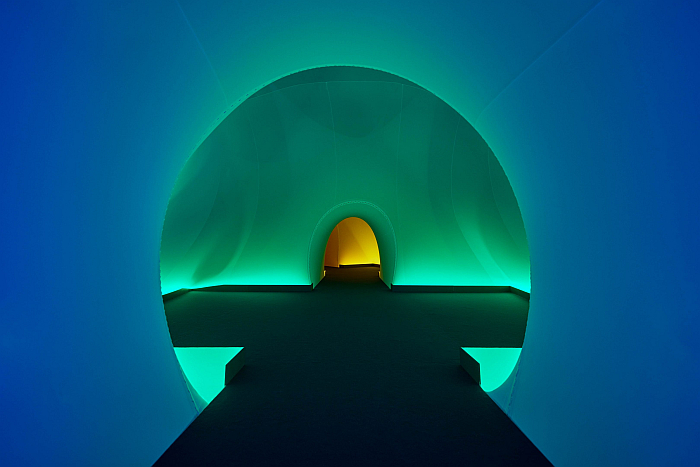
Aleksandra Kasuba: Spectral Passage, 1975, part of Ambienti 1956-2010. Environments by Women Artists II, MAXXI, Rome (here as presented as Inside Other Spaces, Haus der Kunst, Munich, 8.9.23 – 10.3.24 (Photo Agostino Osio, courtesy Haus der Kunst, Munich)
“La naissance des grands magasins. Mode, design, jouets, publicité, 1852-1925” at the Musée des Arts Décoratifs, Paris, France
As all familiar with Émile Zola’s Au Bonheur des Dames will appreciate the rise of the department store in the second half of the 19th century marks not only the genesis of our contemporary consumer culture, one of those key moments when goods of daily use stopped being supplied and started being sold, but also marks a fundamental change in the design and appearance and experiencing of urban spaces, one of those key moments in the (hi)story of architecture and urban planning. And for all unfamiliar with Au Bonheur des Dames, it is worth getting to know.
And it could also be well worth getting to know La naissance des grands magasins, an exhibition which promises to explore the rise and development of the department store, more accurately the Parisian department store, from the earliest mid-19th century expressions such as, for example, Le Bon Marché or Les Magasins du Louvre up to the 1925 L’Exposition internationale des Arts décoratifs et industriels modernes, that global fair that simultaneously gave the world the term Art Déco and signalled the shift away from the decadence of Art Déco to more rational formal expressions, but where all the major Parisian department stores had their own pavilion, thereby not only highlighting their importance and relevance but also helping cement the relationship between Paris and its department stores. And also going a long way to establishing the contemporary understandings of Paris as a location of, a by-word for, luxury, elegance and fashion.
A narrative to be populated by some 700 objects and which will be told via foci not only on the grands magasins themselves, and the mode, design, jouets they sold and publicité whose use they still define to this day, but also through rooting them, and their early (hi)story, in the politics, economics and society in which they arose, the latter promising to be particularly interesting in context of the women of Paris society of that day for whom the department stores were very much intended, as a Zola more than alludes to. And thus an exhibition which should not only allow for better appreciations of Parisian department stores, and the ongoing relevance and importance of those early decades, but also of the development of Paris in the decades either side of 1900.
While in the interests of fairness, the Paris focus of La naissance des grands magasins isn’t an expression of that Parisian sense of its sacred place at the centre of the universe, but rather on account of a sibling exhibition opening in the autumn at the Cité de l’Architecture et du Patrimoine which will take up the narrative in a European context.
La naissance des grands magasins. Mode, design, jouets, publicité, 1852-1925 is scheduled to open at Musée des Arts décoratifs 107, rue de Rivoli, 75001 Paris on Wednesday April 10th and run until Sunday October 13th. Further details can be found at https://madparis.fr
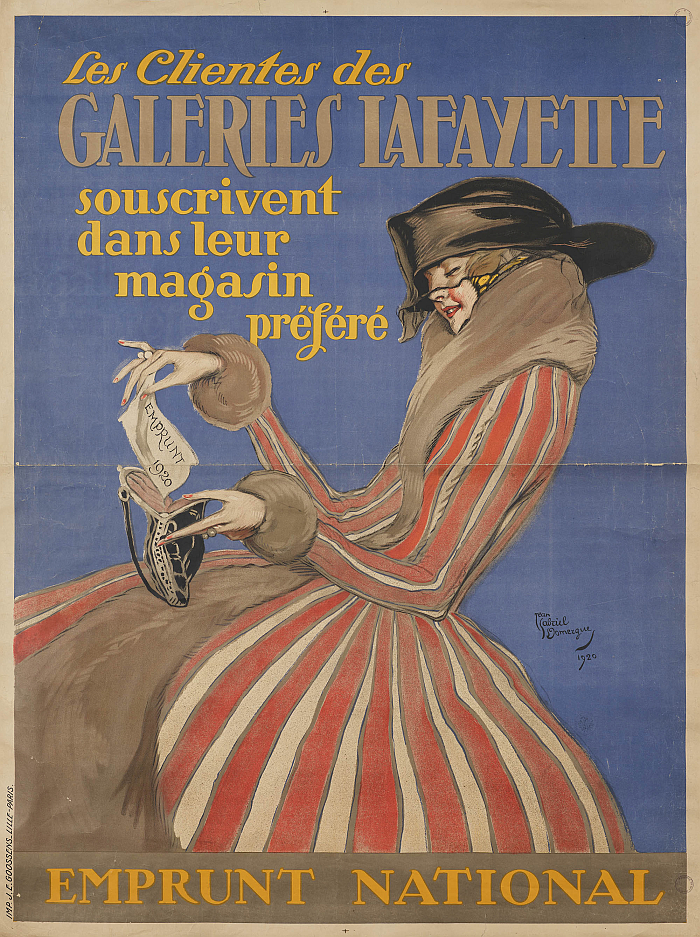
A 1920 Les Galeries Lafayette advertisement by Jean-Gabriel Domergue, part of La naissance des grands magasins. Mode, design, jouets, publicité, 1852-1925, Musée des Arts Décoratifs, Paris (Photo Christophe Dellière, © and courtesy Les Arts Décoratifs, Paris)
“PURe Visionen. Kunststoffmöbel zwischen Ost und West” at the Kunstgewerbemuseum, Dresden, Germany
The introduction of synthetic plastics, for all polyurethanes, in context of furniture and lighting design in the 1960s is and was inarguably one of the defining aspects of the post-War decades: novel materials that not only offered novel forms in kaleidoscopes of colour that found an echo in the economic and social optimisation following the War, but which also promised a democratisation of our objects of daily use and thus heralded a more democratic society in which War would be unthinkable. And then came the oil crises of the 1970s. And then came the recession of the 1980s and its path to financial egoism of the 1990s. And then came the acceptance of the climate emergency. Which all taken together took a bit of the shine of the novel plastic goods.
With PURe Visionen the Kunstgewerbemuseum, Dresden, take us all back to not only those care-free days of the 1960s and early 1970s when polyurethanes were the glorious future for all, but also an era when the two increasingly bitterly divided Germanys were united, at times literally, by the unlikely conduit of polyurethane furniture.
An era to be represented by some 30 objects supported by archive material and photos and in the company of, and amongst others Ernst Moeck, Peter Ghyczy, Siegfried Mehl or Ute Heublein, and which in doing so should allow for some differentiated insights not only into the early (hi)story of polyurethanes in design but also of that German-German design (hi)story that so urgently needs to be more seriously, and a lot more honestly, written than it currently it is
And a presentation that should also help rescue several works from the unbearable ignominy of ‘retro’ under which they currently suffer.
PURe Visionen. Kunststoffmöbel zwischen Ost und West is scheduled to open at the Kunstgewerbemuseum, Schloss Pillnitz, August-Böckstiegel-Straße 2, 01326 Dresden on Saturday April 27th and run until Sunday July 7th. Further details can be found at https://kunstgewerbemuseum.skd.museum
Tagged with: Ambienti 1956-2010, Bauhaus, Bauhaus Museum, Belgium, Brussels, CIVA, Dessau, Dresden, France, Italy, Kunstgewerbemuseum Dresden, La naissance des grands magasins, MAXXI, Musée des Arts Décoratifs, Paris, PURe Visionen, Rome, Simone Guillissen-Hoa, The Gesture Speaks
